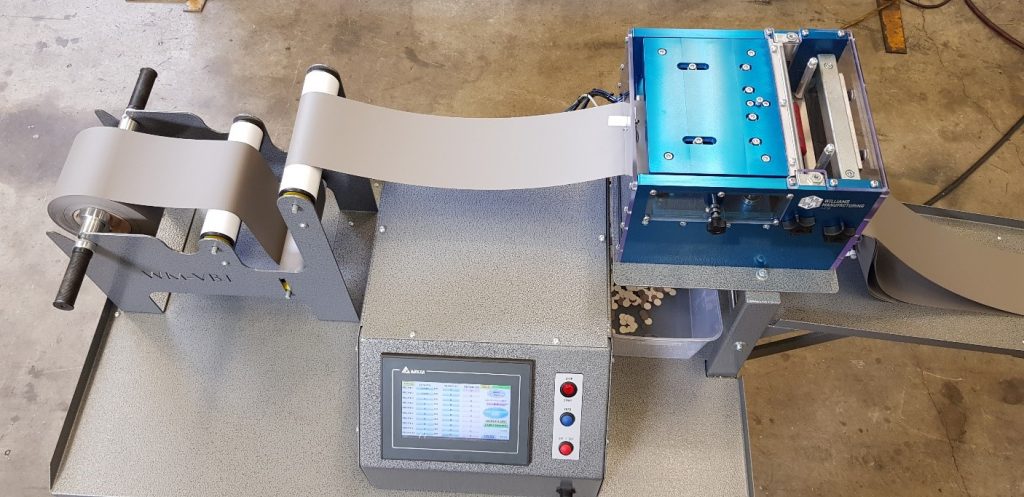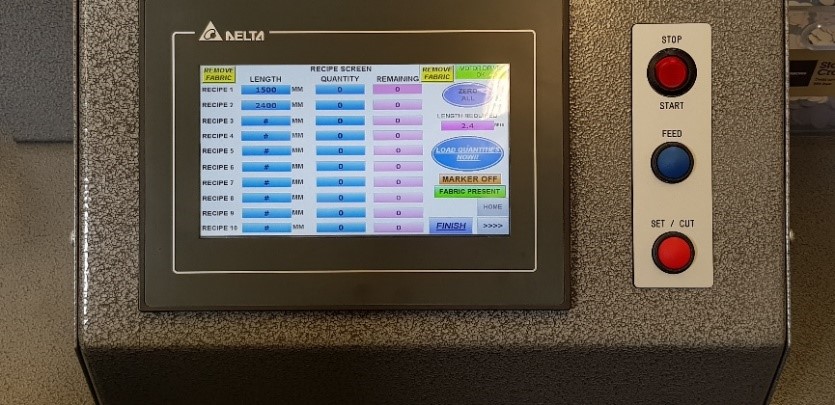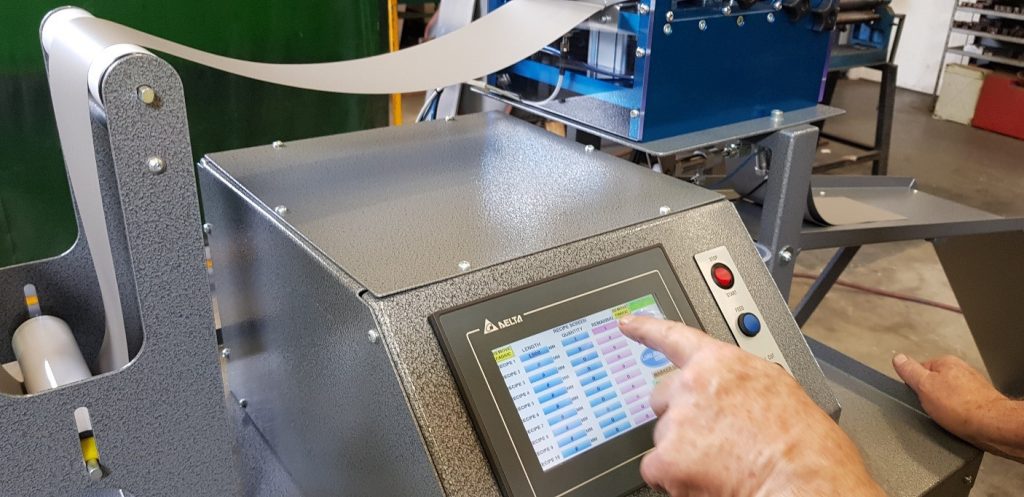
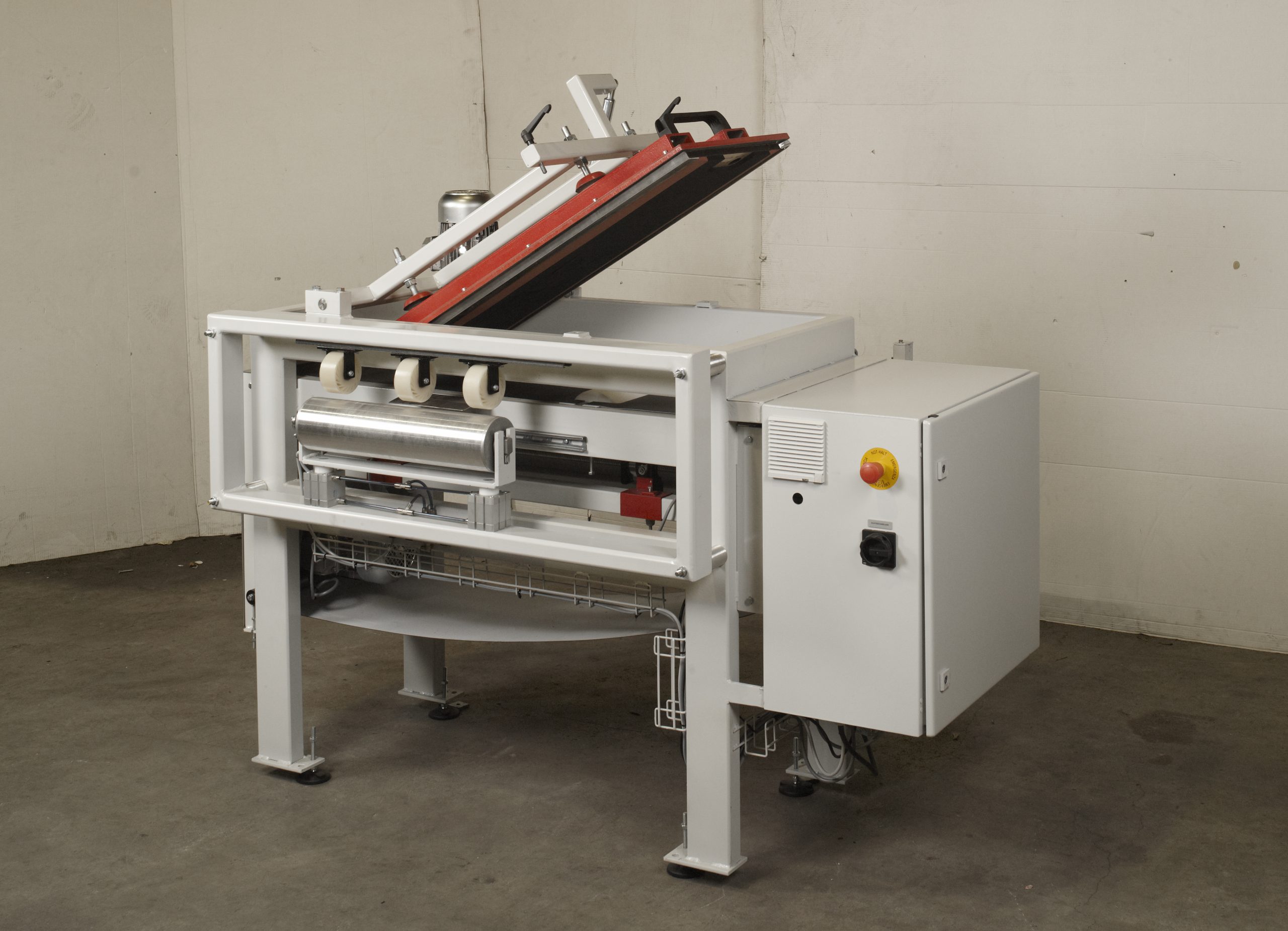
The coronavirus has turned many business models on their heads. None more so than local manufacturing with many winners coming out of the pandemic. With global trade disrupted, delivery timelines and freight charges blowing out, and lockdowns across the world, many Australian blind businesses have reassessed who they source from. As a result, machinery manufacturers are reporting large orders and backlogs for new machines as local fabricators look to boost capacity. Add in the instant asset write off scheme running this financial year and next and the machinery market is booming, but not without its challenges.
TRIPLE M TRADING
Triple M Trading Managing Director, Simon Meyer has been selling packaging machines throughout the Australian market since 2006.
“Packaging Blinds and Awnings in a fast, efficient and cost effective manner is certainly a bottle neck in our industry but this issue is resolved with the Stand-By packaging machines from Holland,” Meyer says.
“These machines have varying levels of sophistication and of course costs. At their most automated, the machines can barcode scan off a worksheet and create a box to the exact length required.”
“The user then adds the product to the formed box and the machine then seals the unit with hotmelt glue, forming a super secure strong box. It can also weigh the box and produce a label for the preferred shipping company, and even print your customers logo onto the side of the box – A great marketing addition for your customers. These machines really take out the user input and can package a 3m blind in under 20 seconds.”
Meyer says that the machines can take away the need to tape or strap boxes together – actually producing a box that is not sealed shut tight.
“As the machines can produce a cardboard box that is custom made to the exact blind side, there is no wastage and the boxes produced can be more environmentally sustainable with little to no bubble wrapping required.”
“These machines certainly allow for high volumes to be outputted with only one user operating the machine. They are highly cost effective and have a super-fast payback time frame.”
Meyer says that the machines are an investment in speeding up processes and reducing freight damage.
“They are designed around higher volume manufacturers that ship their products across the country. There has certainly been a lot more interest in our packaging solution in recent times, as companies are trying to be as cost effective and automated as possible. The Government’s instant asset write off certainly helps make this investment a much easier solution for companies to start investing in their future.”
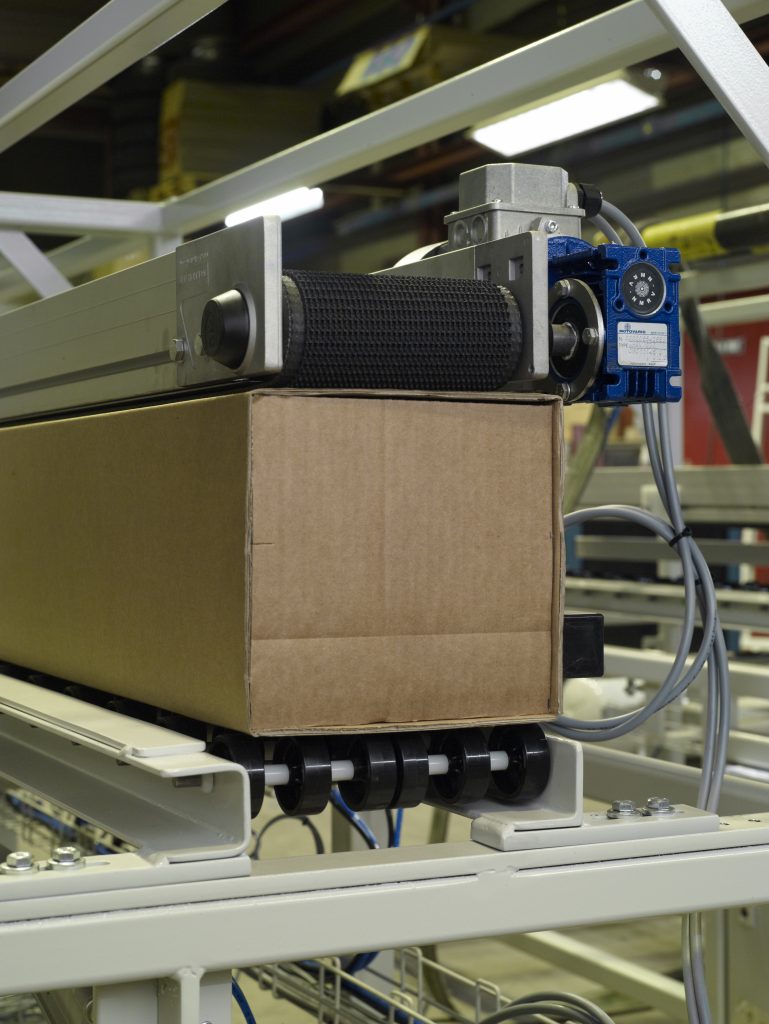
ULTRACUT
Garth Jacobs from Ultracut says the company’s new DuoWeld Impulse Welder has hit the ground running filling the increased demand for reliable Australian-made machines as our industry sector continues to thrive.
“The unique patented features of our machine includes the ability to easily change from a 10mm wide weld to a 20mm wide weld at the push of a button,” Jacobs says.
“The multifit kedar/zip clamp is programmable for three sizes of kedar and zip including all most commonly used systems including Ziptrack, Zipscreen and E-Zip.”
“With a huge 6.4 metre capacity production timing and quality are easily improved. Users can save programs for each fabric and weld type to recall easily.”
Jacobs says Ultracut is aiming to supply quality locally-built machines to the growing external/side retention system market.
“The Duoweld was designed with feedback from customers who know the market and know what they want and this machine delivers.”
“The current market and launch has been well received. We have many backorders and are currently expanding production to cope with the current high demands. The instant write off scheme has befitted greatly many companies who have been able to purchase a Combocutter 5.1 capacity Ultrasonic Cutting Table and the Duoweld to start production of external products for an equipment outlay of less than $150k.”
“This has allowed these customers to take advantage of the additional profit margins associated with manufacturing externals.”
Jacobs says that the sector busy and people continuing to spend on home improvements we can only hope the instant asset write off scheme will be extended further.
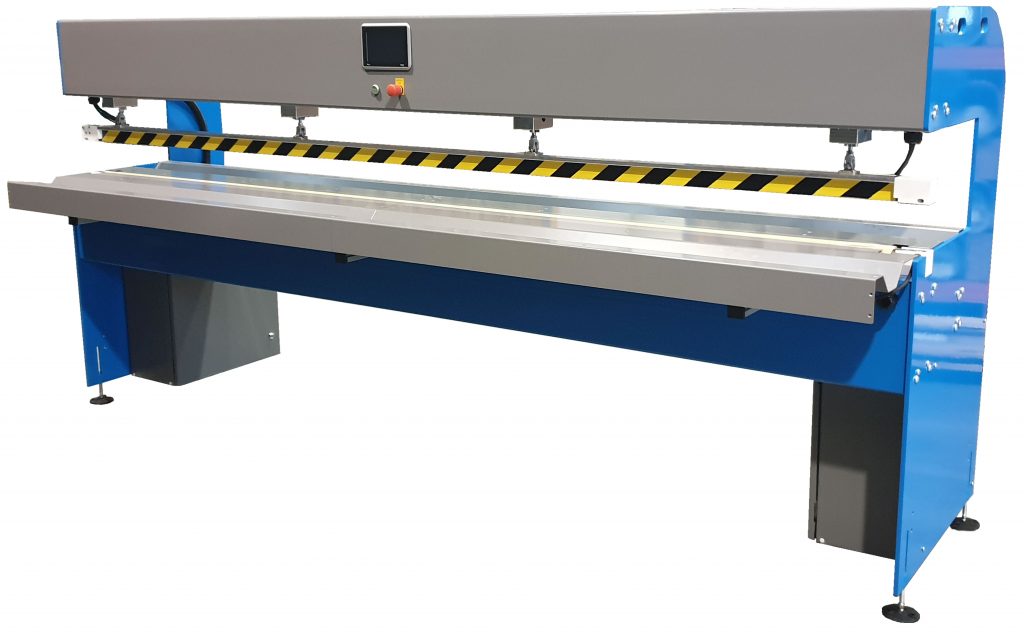
AERONAUT
John Clark saysAeronaut has seen very good sales of blind-making machinery over the last 12 months.
“During the early weeks of the pandemic, Aeronaut assisted a number of manufacturers who were interested in making PPE and other medical equipment including marquees for testing stations. But from the rate of sales and support enquiries, it looked as if most window furnishings manufacturers were back to normal product lines quite soon in most states.”
“However due to manufacturing delays and sky-high freight rates out of China and the obvious focus on local manufacturing, Aeronaut saw a surprising increase in sales which has continued over the southern autumn which is normally a quieter sales period leading up to the new financial year.”
Clark says that there have been three significant changes to the types of machines made over the last 12 months.
“The first has been a lot of cutters which are wider and longer than usual. Typical widths of blind making machines have gone from the 3.2 – 3.5 metre range to 4 and 5 metres wide in both blade and ultrasonic cutters and machines for indoor and outdoor products. The typical working length of 6-7 metres is now often 10-12 metres.”
“The move towards eco-friendly polyester fabrics continues with the release of fabrics like Ambient Renew Repreve which contains 85% recycled material and is PVC free. Polyester should be a lot easier to manage when cutting since it can be cut with both laser and ultrasonic cutters to give a clean, sealed edge. Aeronaut lasers have proved to be the best tool for cutting zebra fabrics without edge discolouration using Aeronaut’s Cyclops machine vision systems for rapidly aligning the cut to the stripe.”
“The other trend has been for retrofits. These are where Aeronaut manufactures a new machine to fit an existing Aeronaut vacuum table. This is a good sign. In the past, blind makers have hung onto machines for as long as 20 years by which time the moving parts of the machine are well and truly past their best and the computer, software and electronics are obsolete making support very difficult. Retrofits allow a manufacturer to get what’s essentially a brand new machine, computer and electronics at a very good saving on a complete new cutter and vacuum table.”
Clark says long and wide-cutting tables make absolute sense if a business has the turnover or the ability to batch work so that more jobs are cut from the same material at one time.
“Nesting more patterns onto a longer length of fabric can give savings on waste fabric of many metres per hour, easily enough to pay for the cost of the cutter. Aeronaut has done comparative tests on 6 metre and 9.6 metre tables using average pattern sizes and it’s easily possible to save $450 in waste fabrics each hour.”
And despite all the positive news for Aeronaut Clark says that the last 12 months haven’t been all plain sailing.
“A potential problem with Aeronaut’s manufacturing has been the delivery and installation of machines overseas, particularly in Europe. Normally, technicians who install or service Aeronaut cutters are either factory trained or trained on-site over a number of installations, which has obviously not been possible over the pandemic. These problems have been mainly handled by producing detailed videos and online instructions and local support techs working nights so people on the other side of the world can get help for installation and training.”
“Freight and cross border travel has been fairly chaotic. Ships carrying new machines have been diverted all over the place and installation teams both in Australia and Europe have found that they suddenly cannot travel across borders.”
“In Australia, service crews have had to leave one state and work in another for the duration of the self-isolation period before travelling to WA for work which in one case meant that an installer didn’t get back to the factory for over 6 weeks.”
“In the USA, installation and service crews have been working in factories where without warning, workers wearing full hazmat suits suddenly appeared, spraying down the whole factory. Needless to say, in most cases the service techs bailed out until the situation became clear.”
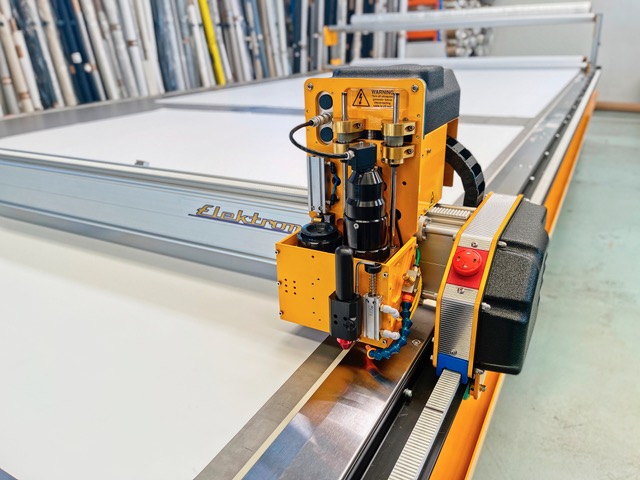
ROLLEASE ACMEDA
Andrew Robson, National Sales Manager at Rollease Acmeda says that the TR1500 welder is designed to accommodate the production of growing popular external shading systems.
“Our TR1500 welder provides a semi-automatic operation, welding zips to fabrics and PVC.”
“Featuring variable settings for welding and cooling times with the ability to work with a variety of coated and uncoated fabrics delivering a slim 10mm weld.”
“Pneumatic cylinders ensure even distribution of clamp pressure for a uniform weld across long widths.”
Available in 5 and 6m widths, standing 1.8m tall with a 1m wide footprint, the TR1500 boasts easy push button control, is certified and features all the latest safety features you would expect.
“The latest advancements now feature a semi-automatic pocketing function, allowing pockets from 20-80mm to be formed via a simple control mechanism,” Robson adds.
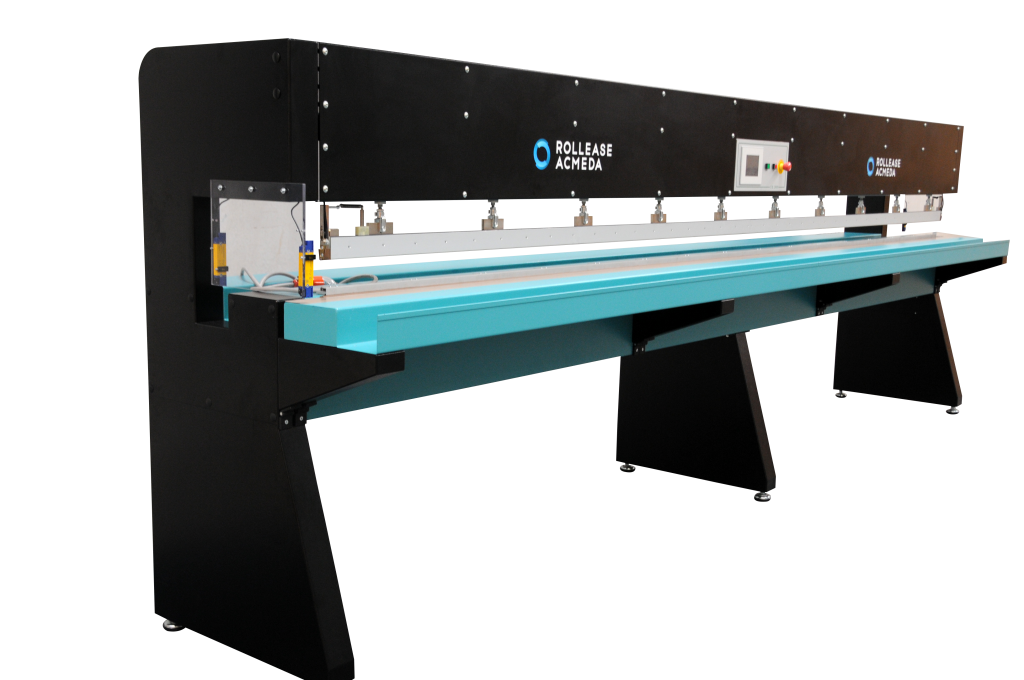
RAYTECH
After selling and supporting the old VB1 design for 20 years Raytech knew all the good and the not so good points of the old VB1 design. The company has recently upgraded the machine leading to what it says is a massive improvement to an already market leading machine.
“We listened to our customers and all this feedback has gone into this new upgraded design,” says Chris Hart Raytech’s Managing Director.
“What isn’t changed is Australian support. Martin Williams, the designer and manufacturer has had 17 years’ experience with the VB1 machine and all parts will now be held locally in Australia. And a new support technician is now in training.”
“I can confirm the new VB1 is 100% Australian manufactured. Almost every fabricated part is made at the Queensland factory. And all the consumable parts like blades, punches etc are from Australian suppliers.”
“The consumable parts are identical to the old model (guillotine blades, hole punch and die, drive rollers, etc). So, if you have an old and a new machines it’s nice to know these consumable parts are interchangeable.”
“Being 100% Australian made makes the new VB1 a better supported machine than previously when most critical parts were imported.”
Hart says that the new machine has a bigger screen, is faster (with an average of 20 louvres a minute), is more accurate, has improved ergonomics and a new fabric infeed for greater accuracy and ease to change rolls.
“On the left side the infeed has a great new system of passive rollers for dealing with the various tension of the fabric roll.”
“The new infeed eliminates the drag on fabric entering the machine head and this was a primary cause of slightly inconsistent lengths.”
“This makes the infeed more ergonomic and an aid to accuracy. The infeed has a bearing mounted roll holder to slip through the fabric roll and then it is simply placed on the machine, making it so easy to load or change rolls.”
The new VB1 also boast a new outfeed, no punched out fabric holes on the floor, LAN connection for data entry and installation and training is not required.
“The VB1 comes ready to work straight out of the crate all set up for your pocket sizes and allowance.”
“You can be running in only a few minutes. And even though it’s so intuitive a technician will be happy to guide you through the screens and help with the familiarization and basic operation.”
“Raytech will get your preferred pocket settings and a sample to ensure the ideal set up of the machine out of the box for you.”
